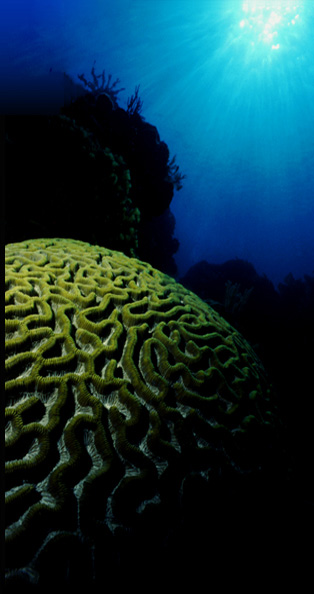|
Underwater Strobes:
Part 4. TTL (continued)
are also approximately equally distant, so the strobe does not
have to vary the output to illuminate distant objects.
In the second image there are two conflicting situations which
will mislead the sensor. The first is the open expanse of water.
In a perfect expanse of open
water, a strobe will fire at full power because there is no
reflective return to tell the sensor to stop (if the subject is
very small compared to the background, it's virtually the same
thing).
In this situation, however, the
diver provides an adequate reflective surface and TTL would
probably work --if it weren't for the sun spot effect I was trying
to capture. The TTL sensor "sees" the sun spot as an overpowering
source of light and therefore "reasons" that only a tiny amount of
light is needed. Which is completely wrong. Without the strobe, my
diver would been completely shadowed and all detail lost, since
direct background lighting creates silhouettes.
If you are aware of the
limitations of TTL metering, you can compensate by "fooling" the
TTL metering with tricks like deliberately choosing an incorrect
ISO setting. But spending time deliberately overcoming the
time-saving features of TTL doesn't make sense.
|
















